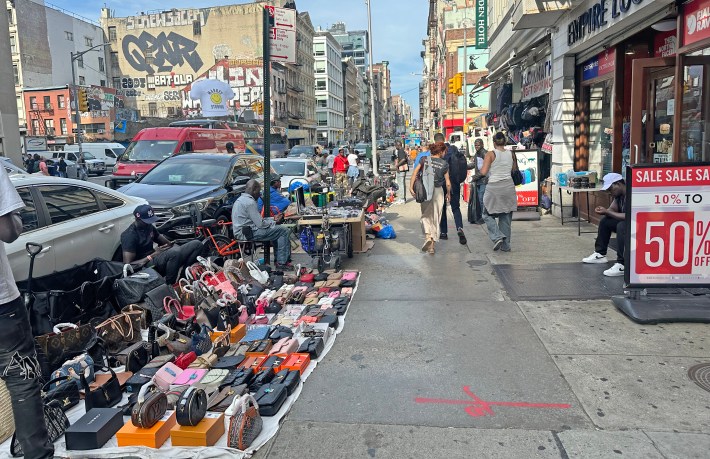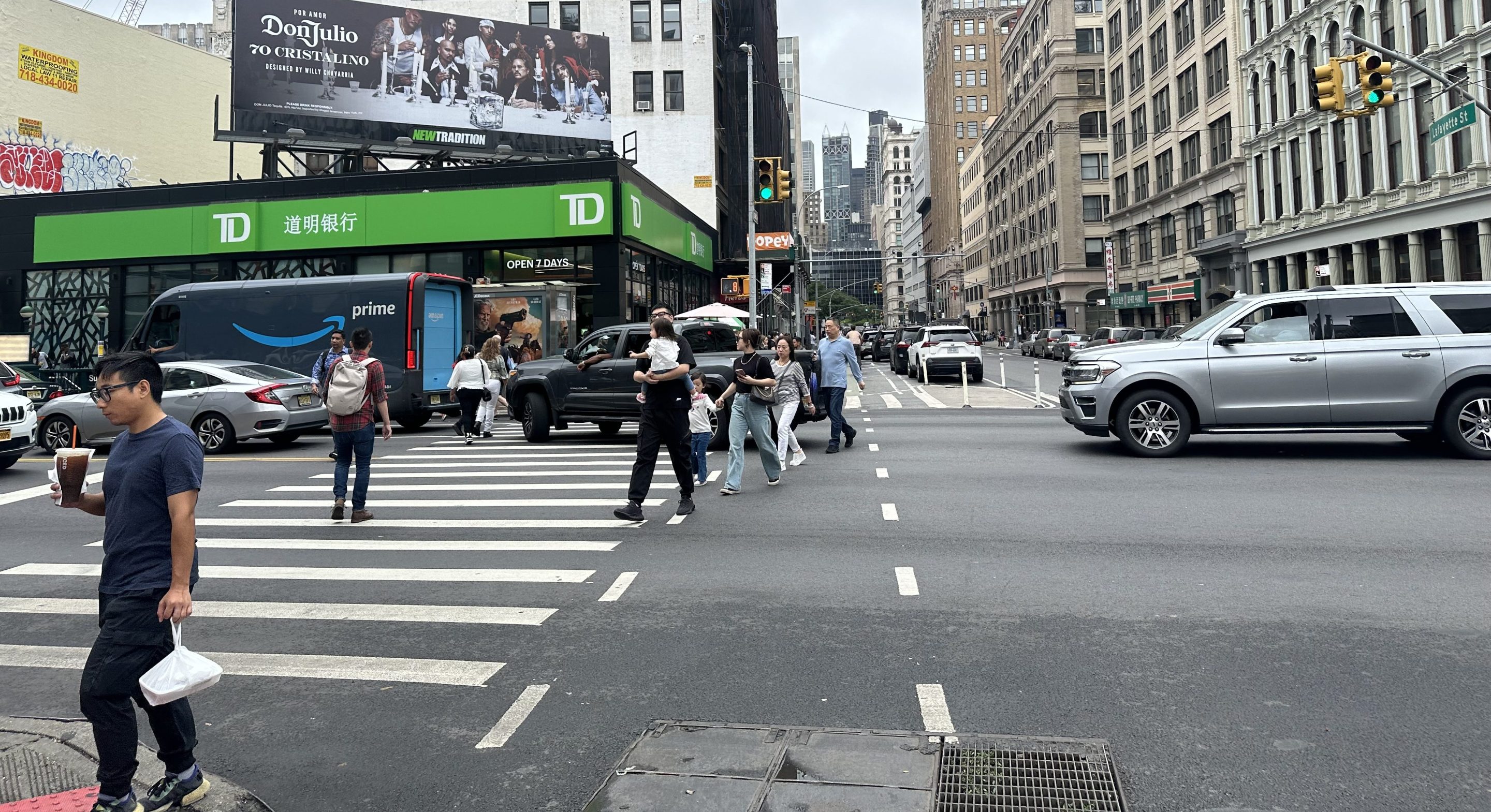At its best, navigating Canal Street is a nuisance; at its worst, it’s dangerous or even deadly. For the aging and elderly population, the well-documented problems of Canal Street are even more acute. The narrow sidewalks, overwhelming traffic, and high levels of pollution create a perilous environment, one that has been the subject of countless studies but remains largely unchanged.
But could it? Thanks to a recent grant from AARP, the retiree-advocacy group, Transportation Alternatives is conducting a series of "walk audits" along Canal Street, to highlight the dangerous conditions that disproportionately affect the elderly community.
“The AARP grant underscores the importance of transforming Canal Street into a safer, more accessible space for everyone, especially seniors,” said Emily Jacobi, TA’s Manhattan organizer.
“Canal Street is a Vision Zero priority corridor for the Department of Transportation, but the community has seen little in the way of improvement. There is not a single issue related to safe streets and sidewalks that is not highlighted by the conditions on Canal Street.”

Aging New Yorkers comprise 15 percent of the general population, but 45 percent of pedestrian fatalities in the Canal corridor, Jacobi said. Canal Street has experienced 10 traffic fatalities and 700 reported injuries since the implementation of Vision Zero priority in 2014
Other facts about Canal Street underscore the urgency for change:
- Pedestrians making up the vast majority of street users, but the street’s design sets aside 65 percent of the space for cars.
- Canal Street is home to a higher percentage of residents aged 65 and older, as well as children, compared to citywide averages.
- The street lacks adequate shade, exacerbating the health risks posed by air pollution from increasing car traffic.
- Canal Street has been a DOT Vision Zero Priority Corridor since 2015, yet it remains Manhattan's most dangerous corridor for traffic accidents.
- An overwhelming 84 percent of households in the Assembly district do not have access to a vehicle, the highest percentage of any district in New York State.
- Only 5.6 percent of commuters in the district drive to work. In stark contrast, 89 percent of commuters either take public transit, walk, or bike to work, making this the highest rate of non-car commuters in any Assembly district in the state.
One need not walk very far on Canal to observe the challenging conditions that elderly New Yorkers face every day — it's a roadway always buzzing with traffic, whose already narrow sidewalks are overtaken by street vendors and the crush of pedestrians, where cycling is a death wish and traveling by bus impossible.
The corner of Canal and Lafayette, for example, is neither safe nor accessible for elders. There are trip hazards everywhere. Nearby, the triangle bounded by Canal, Walker and Baxter — aka the Chinatown Kiosk — is surrounded by the incessant flow of car and truck traffic, its sidewalks broken and narrow, surrounded by double-parked cars and trash.

Wellington Chen, executive director of the Chinatown Partnership, said he is acutely aware of the health and safety issues plaguing the elderly on Canal Street.
“The traffic on Canal Street leads to pollution, and stress and hypertension among the elderly in the community,” Chen said. "Everyone’s blood pressure rises a few points on Canal Street.”
Chen emphasized that it’s not just physical safety at risk, but also the broader health implications of long-term exposure to traffic pollution and stressful conditions.

Seniors Are Tired of Waiting
TA’s walk audits will aim to answer a fundamental question: "How can our streets be designed to support the needs of aging New Yorkers?" For now, the answer remains elusive, as the DOT has been slow to move beyond mere studies and visioning projects.
As Jacobi noted, "We don’t need more studies to tell us what we already know: Canal is dangerous, it’s deadly, and it’s killing us. DOT must prioritize and begin a full, comprehensive redesign of Canal Street, meeting this moment with the action and urgency it demands.”
For its part, the DOT said its own audits have resulted in traffic-calming devices being installed along Canal — and more help is on the way.
“This administration is delivering unprecedented investments to improve safety and public space in Chinatown and around the Canal Street corridor,” said spokesperson Vin Barone. “Canal Street remains a focus for DOT and we will be hosting a series of public engagement sessions in 2025 to get feedback on proposals.”
But the work Barone mentioned dates back to initial workshops in March 2022, more than two years ago. And we are more than four years after Manhattan Community Board 1 voted to demand that the DOT improve the street with things like expanded pedestrian space and an east-west protected bike lane on or near Canal.
And we are more than six years after Transportation Alternatives collected signatures on a petition that dubbed Canal the “boulevard of death.”
And we are more than 13 years from an earlier study recommended changes on Canal Street.
The next Transportation Alternatives' Canal Street audit will be on Wednesday, Oct. 16, from 4 to 6 p.m. Meet at 101 Baxter St. (at Canal Street). For a full schedule, click here.






